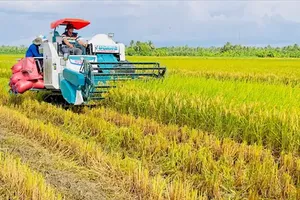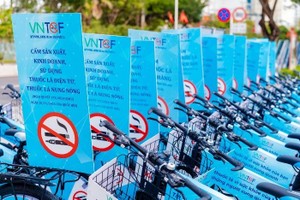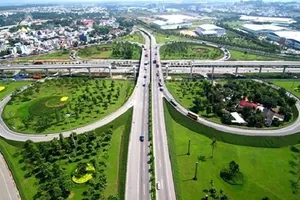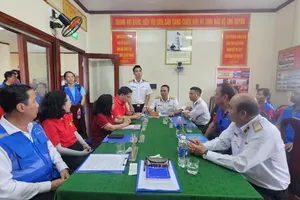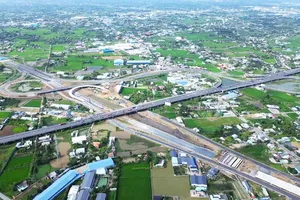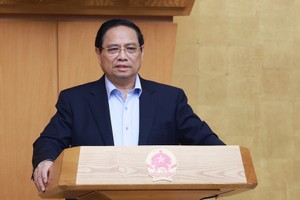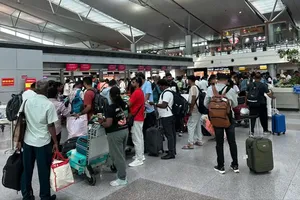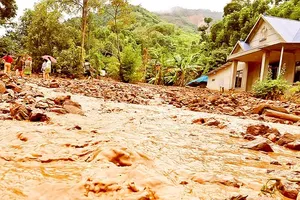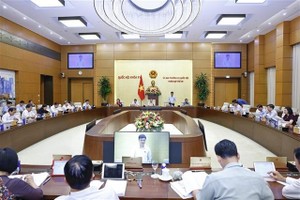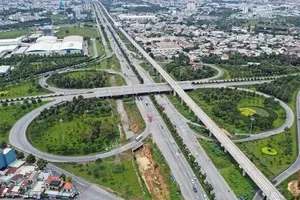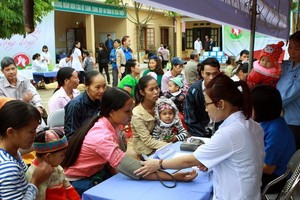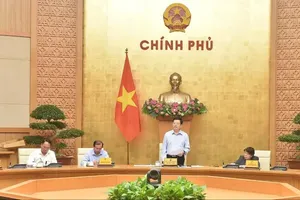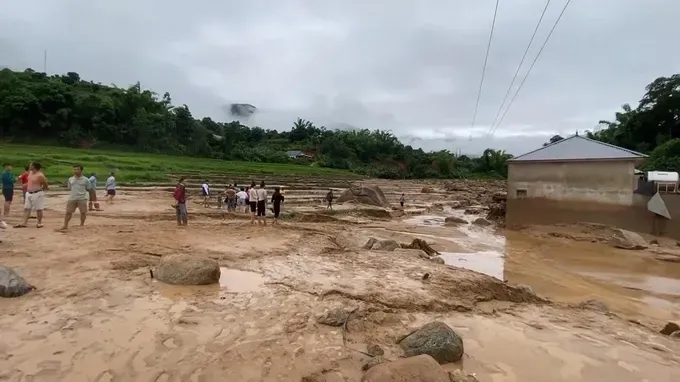
Prime Minister Pham Minh Chinh on July 27 issued an official dispatch calling for focused efforts to address the aftermath of the flash floods and landslides in the northern mountainous province of Son La, and to proactively prepare for further extreme weather events.
The move came after at least four people had been reported missing, while two others were found dead in the flash floods in Son La province.
Search operations are ongoing where the incidents occurred in Chieng So and Muong Lam communes, but disaster recovery efforts are facing serious challenges as roads, mobile signal stations, and power infrastructure have been damaged, local authorities reported.
In Muong Lam, eight suspension bridges were swept away by floodwaters. Landslides have blocked access to remote villages, especially along the Muong Lam – Dua Mon route.
According to preliminary reports from the Ministry of Agriculture and Environment (MoAE), based on Son La’s local data, heavy rains from July 26 night to early July 27 morning triggered severe flash floods and landslides in the communes of Song Ma, Sop Cop, Huoi Mot, and Chieng So.
In the official dispatch, PM Pham Minh Chinh extended his condolences to the families of the victims and expressed solidarity with the communities affected.
To ensure the safety of people and their properties, the PM’s dispatch calls for Son La authorities to lead search efforts for missing persons, ensure the safety of rescue teams, care for the injured, and provide support for bereaved families, including assistance with funeral arrangements in accordance with local customs.
Immediate attention must also be given to clearing blocked roads and reaching isolated areas to deliver essential aid and prevent food shortages.
Local administrations across the northern mountainous and midland provinces, including Son La, Lao Cai, Lang Son, Thanh Hoa, and Nghe An, are instructed to proactively inspect areas at risk of landslides and flooding, and evacuate residents when necessary.
Defence and police forces stationed in affected areas are to assist in rescue and recovery operations, deploy necessary equipment, and help identify at-risk areas for early warnings.
The MoAE is tasked with issuing timely forecasts and informing local authorities and people, while also updating disaster response plans based on local conditions.
Relevant ministries are to lead efforts in restoring damaged infrastructure, especially roads, power, water, telecommunications, health facilities, and schools.
Media agencies are asked to provide timely, accurate coverage and provide knowledge on recognising disaster risks and responses.
The Office of the National Committee for Civil Defence will monitor and coordinate recovery efforts, while the Government Office will oversee the implementation of the PM’s official dispatch.
